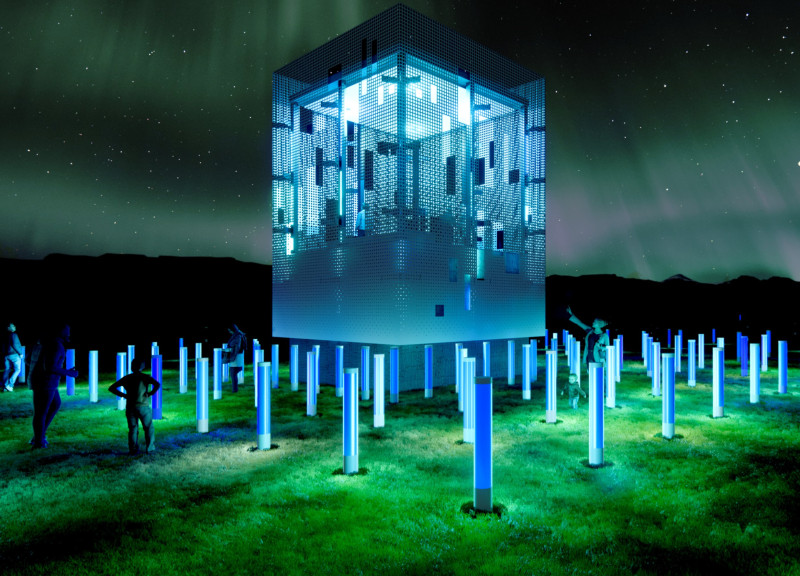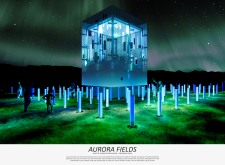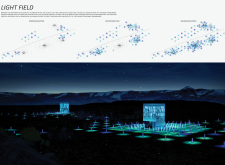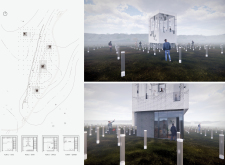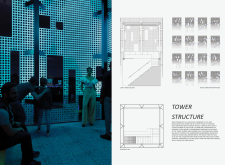5 key facts about this project
The "Aurora Fields" project is an architectural installation located at the Grotjus Cave in Iceland. It aims to embody the visual essence of the Northern Lights through an interactive light and tower system. The project functions as both an experiential space and a landmark that invites visitors to engage with the surrounding landscape. By integrating natural phenomena with architectural design, it fosters a unique environment where architecture and nature coexist harmoniously.
Adaptive Light Interaction
The primary component of the installation is the central light tower, constructed from perforated metal panels that enhance the transmission of light. These panels create a layered façade, allowing for an interplay of shadow and illumination. Accompanying the tower is a field of LED light poles that are strategically arranged in a modular grid around the installation. This array is designed to dynamically respond to environmental conditions, simulating the color variations of the Northern Lights through a range of intensities. This adaptive lighting approach enables the project to provide a constantly changing experience for visitors, effectively bridging the gap between technology and nature.
Material Selection and Sustainability
The choice of materials plays a crucial role in the functionality and aesthetic of the project. Perforated metal panels ensure structural integrity while allowing light to permeate. Concrete is utilized for the foundation, contributing durability to the installation. Additionally, glass elements augment the interaction between light and space, providing transparency and enhancing viewer engagement. The use of natural grass surrounding the installation further ties the architectural elements to the natural landscape, emphasizing sustainability. These material choices reflect a commitment to creating a design that is not only visually compelling but also respects its environmental context.
For those interested in a deeper understanding of the architectural strategies employed in the "Aurora Fields" project, a thorough examination of the architectural plans, sections, and designs is recommended. Exploring these elements will provide valuable insights into the unique architectural ideas that define this installation.


